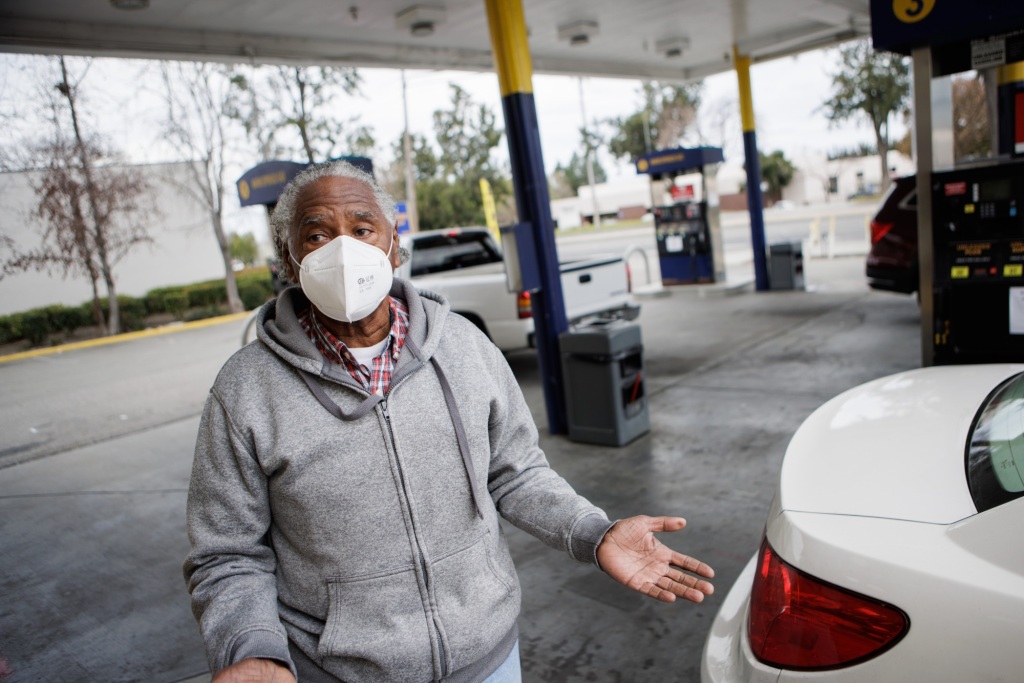It took only a few weeks for California gas prices to rocket past $5 a gallon and reach nearly $6 last week. But drivers hoping to see a dramatic drop in fuel costs in the coming weeks – or even in time for a summer road trip – should not hold their breath, fuel industry experts said Monday.
While statewide prices at the pump have slid back a bit in recent days to $5.85 a gallon, according to AAA, it could take months for prices in the Golden State to hit $5 again, even as President Joe Biden has sought to quell rising fuel costs by releasing 180 million barrels of oil from the strategic petroleum reserve over the next six months.
The good news is that Biden’s oil release is expected to bring some modest relief to drivers around the country. The bad news?
“I don’t really see the next time California or the Bay Area’s going get under that $5 mark – maybe later this year,” said Patrick De Haan, head of petroleum analysis for GasBuddy, a company that crowdsources gas price data. “It might be a while.”
Gas Prices in the Los Angeles area are still scraping $6 a gallon at $5.97, down only a few cents from their all-time highs last week, while prices in San Jose are $5.80 down 5 cents and San Francisco is down about four cents to $5.90, according to AAA.
Washington’s latest oil release will have a relatively small impact on prices, said James Sweeney, a professor of management science and engineering at Stanford – he estimated an 11 cent to 16 cent drop in gas prices – leaving the Bay Area’s gas average prices well above $5.
Even before Russia began amassing troops along the Ukrainian border sparking concerns over an invasion, California’s gas prices were already high at over $4.60 a gallon, as fuel demand swung from a pandemic travel collapse that briefly plunged oil prices into negative territory to surging vehicle trips fueled by the economy reopening.
California’s gas prices are also typically over $1.20 higher than the national average due to a combination of higher taxes, environmental regulations, and according to some analysts, larger profit margins in the oil industry.
Now the main issue, said De Haan, is Moscow’s invasion of Ukraine. Without a resolution to the war, which has sparked a massive humanitarian crisis, the price of crude oil will remain elevated translating to prices at the pump. On Monday, crude oil prices moved back over $100 a barrel as the market watched the European Union mull new sanctions on Russia.
But if there is an end to the bloodshed, the effect of the conflict will still be felt for years to come on drivers since major companies, including Exxon, Shell, and British Petroleum, have abandoned their investments in Russia.
“There’s going to be some scars,” said De Haan. “Nobody is going to go back to business as normal.”
Another issue with retail gasoline prices is that they have a history of rising quickly in tandem with oil prices falling back slowly even when oil prices drop, a principle economists refer to as “up like a rocket, down like a feather.”
“Nothing requires gasoline retailers to push down their price other than the competition with other retailers,” said Sweeney, explaining the gap between oil prices and what drivers see at gas stations. “That sometimes takes several weeks.”
The psychological effect of the soaring prices on drivers might be around even longer.
For Nola Hardy, an Oakland resident who was paying $5.97 at a Chevron ]to fill up her car on Monday, the sustained spike in gas prices means she is going to stay put more often.
“It’s awfully high, especially if you’re on a fixed income,” said Hardy. “I won’t be driving as much.”










